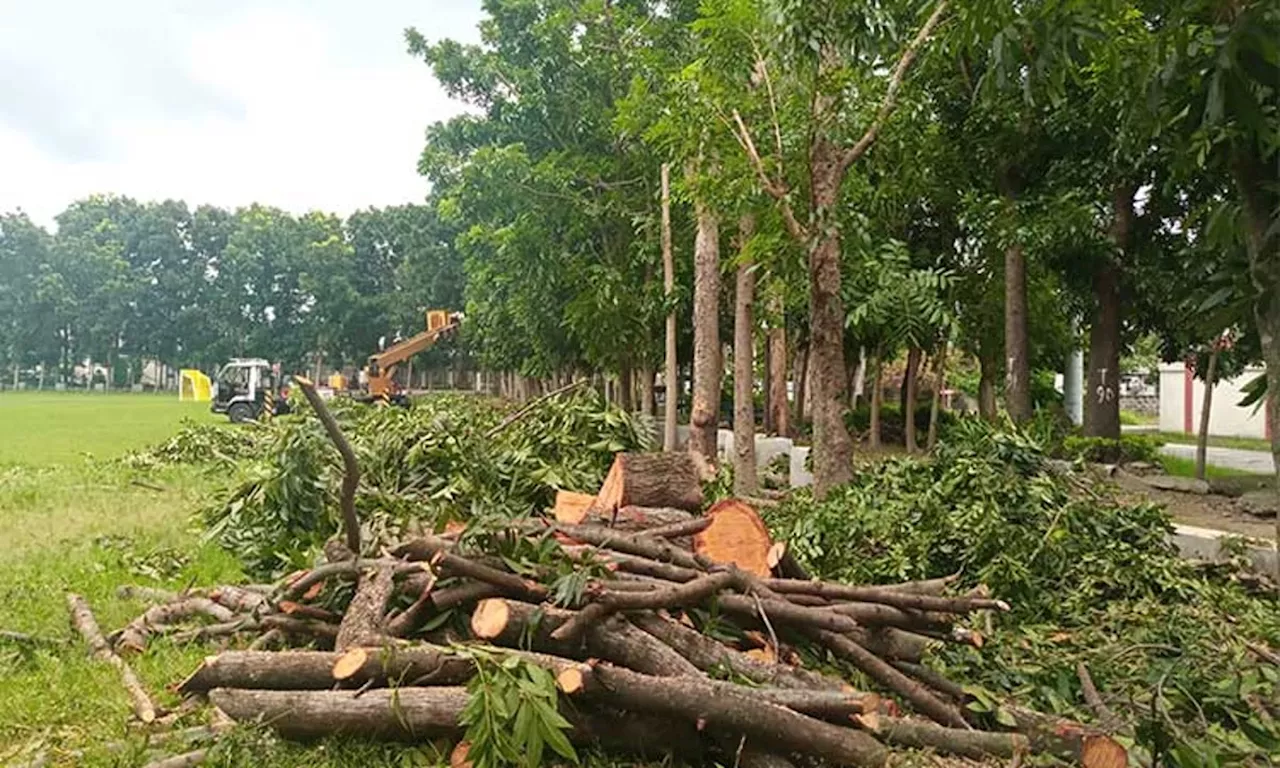This article explores the growing threat of deforestation and the potential of fast-growing hardwood trees to provide a sustainable solution for the increasing demand for lumber. It highlights the benefits of these trees for the environment and the economy, emphasizing their role in carbon sequestration, soil improvement, and farmer income.
Have you ever considered where the wood we rely on for furniture, construction, and even musical instruments actually comes from? It’s easy to assume there’s an endless supply from vast forests somewhere. But here’s the truth: those forests are far from infinite. They’re disappearing faster than we realize. Demand for lumber is set to quadruple by 2050. Meanwhile, native forests, the ones supplying trees, (including the Christmas Trees), are facing immense threats.
Climate change, invasive pests, and raging wildfires have already put 30 percent of tree species at risk of extinction. It’s a dire situation, and it’s happening right now. But what if there was a way to turn things around? Imagine being able to grow trees specifically for high-quality hardwood but in a fraction of the time traditional species take. What if these trees didn’t just meet the rising demand for lumber but also actively helped the environment? Absorbing carbon, enriching the soil, and supporting pollinators like bees?Here’s something fascinating: not all trees take decades to mature. Some hardwood species grow three times faster than cedar, ready for harvest in just 8-12 years. Think about that: a renewable, sustainable source of premium timber, all in the time it takes to launch a few tech upgrades. And this isn’t just about trees. It’s about people; farmers, specifically. Farmers play a pivotal role in this system. By planting and nurturing these fast-growing trees, they create a sustainable income source while providing us with high-quality wood. It’s a win-win-win: economic stability for farmers, sustainable resources for industries, and protection for native forests.They improve soil health, foster biodiversity, and absorb substantial amounts of CO2. In fact, just one acre of these trees can offset an entire decade of a person’s carbon footprint. That’s a tangible, measurable impact on the planet.The North American lumber market alone is projected to reach $170 billion by 202
FORESTRY SUSTAINABILITY CLIMATE CHANGE FARMING LUMBER DEMAND
Philippines Latest News, Philippines Headlines
Similar News:You can also read news stories similar to this one that we have collected from other news sources.
 How Arthaland bridges the gap, turning vision into actionArthaland, a leader in sustainable development, is committed to ensuring every project it builds is sustainable.
How Arthaland bridges the gap, turning vision into actionArthaland, a leader in sustainable development, is committed to ensuring every project it builds is sustainable.
Read more »
 KodeGo, iPeople develop students’ digital skills for today’s fast-growing tech careers917VENTURES’ educational-technology platform “KodeGo” has entered into a partnership with higher education institutions under iPeople: a Yuchengco-Ayala Education collaboration equipping students with relevant, industry-ready skills in high-demand digital fields.
KodeGo, iPeople develop students’ digital skills for today’s fast-growing tech careers917VENTURES’ educational-technology platform “KodeGo” has entered into a partnership with higher education institutions under iPeople: a Yuchengco-Ayala Education collaboration equipping students with relevant, industry-ready skills in high-demand digital fields.
Read more »
 Trees of Hope: San Juan City's Inmates Craft Christmas OrnamentsSan Juan City Jail inmates are creating enchanting Christmas ornaments using pre-loved barongs, spreading Yuletide cheer beyond their confinement and connecting with families who can purchase the decorations.
Trees of Hope: San Juan City's Inmates Craft Christmas OrnamentsSan Juan City Jail inmates are creating enchanting Christmas ornaments using pre-loved barongs, spreading Yuletide cheer beyond their confinement and connecting with families who can purchase the decorations.
Read more »
 BENRO seeks RONO for cutting of 79 trees at tree parkSunStar Publishing Inc.
BENRO seeks RONO for cutting of 79 trees at tree parkSunStar Publishing Inc.
Read more »
 Filipino visionary from Cebu becomes billionaire by planting treesBRIAN Christopher Aguilar, a proud son of Cebu, Philippines, is shaking up the cryptocurrency world with an eco-sustainability mission that has caught global attention.
Filipino visionary from Cebu becomes billionaire by planting treesBRIAN Christopher Aguilar, a proud son of Cebu, Philippines, is shaking up the cryptocurrency world with an eco-sustainability mission that has caught global attention.
Read more »
 DENR 7 Cautions Candidates Against Posting Campaign Materials on TreesThe Department of Environment and Natural Resources (DENR) 7 has issued a reminder to candidates in the May 2025 elections, urging them to refrain from posting campaign materials on trees. The DENR 7 emphasizes that using trees, especially with iron nails, for streamers and tarpaulins can severely damage their health and invite harmful pests and diseases.
DENR 7 Cautions Candidates Against Posting Campaign Materials on TreesThe Department of Environment and Natural Resources (DENR) 7 has issued a reminder to candidates in the May 2025 elections, urging them to refrain from posting campaign materials on trees. The DENR 7 emphasizes that using trees, especially with iron nails, for streamers and tarpaulins can severely damage their health and invite harmful pests and diseases.
Read more »
